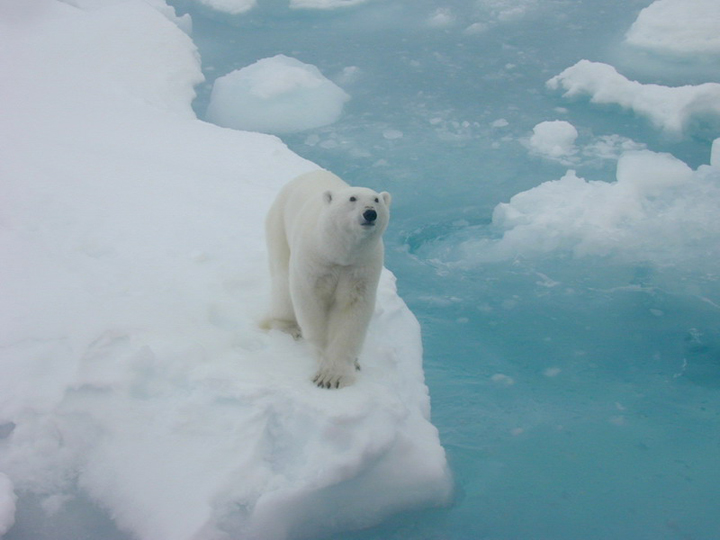Warning: Some readers may find images in this story disturbing.

A startling photograph of an emaciated polar bear in Svalbard, Norway, has hit social media and some people — including the photographer — are linking it to climate change.
However, one polar bear expert believes we shouldn’t be so quick to make that conclusion.
The image was posted by Kerstin Langenberger on her photography-based Facebook page on Aug. 20. It has taken social media by storm.
Langenberger posted her concern over warming in the region and the number of starving polar bears she has observed.
“Yes, I have seen bears in good shape — but I have also seen dead and starving polar bears. Bears walking on the shores, looking for food, bears trying to hunt reindeer, eating bird’s eggs, moss and seaweed,” she wrote in her post.
Andrew Derocher, a professor of biological sciences at the University of Alberta who was also a research scientist for the Norwegian Polar Institute for seven years during the 1990s and early 2000s, said that seeing bears in this condition isn’t new and that we can’t — based on one image — conclude definitively that this bear is the image of a changing Arctic.
“Without having a lot of associated information, we can’t take a sample size of one and make major projections,” he said.
The starving bear looks to be in her 20s, Derocher said, and if that’s the case, it could be a natural death.
However, that’s not to say that climate change is off the table. He noted that the frequency with which we’re seeing starving bears is on the rise.
The link between sea ice and polar bears
Many climatologists look at the Arctic as a barometer for climate change. Over the past 30 years it has warmed more than any other place on our planet. That warming has caused dramatic sea ice melt in the region. In February 2015, the National Snow and Ice Data Center (NSDIC) recorded the lowest sea ice extent on satellite record.
In the same monthly summary, NSIDC also reported temperatures about 8 to 10 degrees Celsius above normal in the Barents Sea between Svalbard and Franz Josef Land. That reduces the sea ice area, which in turn can leave polar bears stranded away from their essential food source, seals.
With such a dramatic decline in sea ice, there is concern that many polar bears will starve to death leading to their eventual loss.
And the warming of the Arctic has other consequences, such as the introduction of diseases and parasites, as well as other predators that feed on seals such as the killer whale. All of that combined seems to spell doom for the polar bear.
“It’s an erosion of the habitat, and what we expect is pictures of this to become more common,” said Derocher. But the rise in photos may also be due to the prevalence of tourists in the region, those equipped with cell phones and cameras, with photos ready to hit the digital world at any moment.
Of the 19 polar bear populations, Canada is either partially or fully home to 13. Of those, the ones in the southern Beaufort sea aren’t doing very well. The population has been in steady decline over the last 10 to 15 years, with some estimating a 40 per cent decline in abundance. There is a similar story in the western Hudson Bay region.
But the good news is that so far, the polar bear populations in the northern Beaufort Sea are stable.
So while the image of the starving polar bear is indeed startling, it doesn’t necessarily mean that she is starving due to climate change. However, it might remind us of what we may see more of as the Arctic continues to warm and the sea ice continues to melt.



Comments